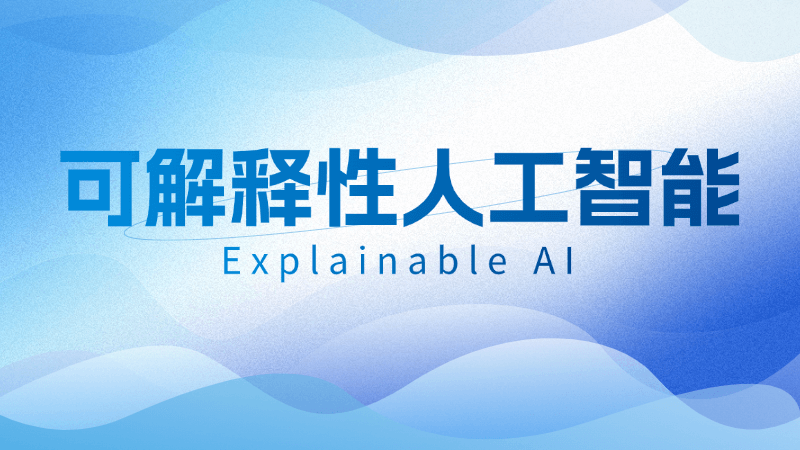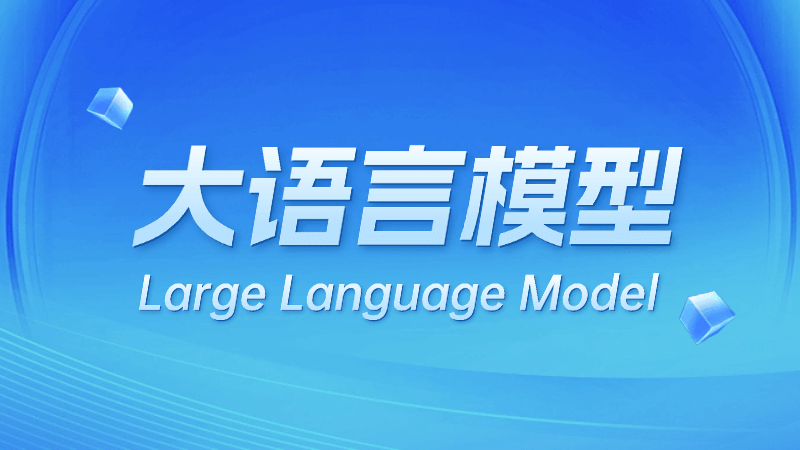What Explainable AI (AI) is, in one article
Definition and Core Goals of Interpretable Artificial Intelligence
Explainable AI (XAI for short) is a set of concepts, methods, technologies and governance frameworks covering the overall program, the goal of which is to present the decision-making process and rationale of machine learning systems, especially deep learning models, which are often regarded as a black box, to human beings, so as to make them transparent, comprehensible, questionable and correctable. It not only answers the question "what answer does the model give", but also answers the question "why does it give this answer, under what conditions will the answer change, and how credible is the answer".
XAI's core goal consists of four dimensions: Transparency, i.e., to disclose the internal logic of the model as much as possible; Interpretability, i.e., to translate complex mathematical relationships into human-digestible language, graphs, or examples; Trustworthiness, i.e., to reduce the user's doubts through explanations and improve the acceptance of the system; and Human-Centered Design, i.e., to allow users from different backgrounds to have access to explanations that match their cognitive level. Trustworthiness, which reduces user doubts and improves system acceptance through explanations; and Human-Centered Design, which allows users from different backgrounds to obtain explanations that match their cognitive level, ultimately promoting "human-machine co-rule" rather than "machine dictatorship". As the EU White Paper on Artificial Intelligence says, "The right to interpretation is a fundamental human right in the digital age", and XAI is the technological bridge to realize this right.

Research Methods and Techniques for Interpretable Artificial Intelligence
- Local Interpretation Methods: LIME (Local Interpretable Model-agnostic Explanations) reveals which pixels, words, or numerical features dominate this prediction by training interpretable linear models in the vicinity of a single sample; SHAP (SHapley Additive exPlanations), on the other hand, quantifies the marginal contribution of each feature based on game-theoretic Shapley values, balancing consistency and local fidelity.
- Global interpretation methods: Partial Dependency Plot (PDP), Cumulative Local Effects (ALE) plots show the average effect of features on the overall predicted trend; Global SHAP bar charts allow direct comparison of the order of importance of different features in the full sample.
- Interpretable model design: Generalized Additive Models (GAMs), RuleFit, and Interpretable Neural Networks (e.g., Prototype Networks) have built-in "disassemblable" structures during the training phase, which are naturally easy for humans to read.
- Attention and Hierarchy Visualization: Attention weights in Transformer and Grad-CAM heatmaps in CNN allow researchers to track "where the model is really looking" layer by layer.
- Causal inference embedding: using frameworks such as DoWhy and CausalForest to combine causal maps with explanations, distinguishing between "relevance characteristics matter" and "change in outcome after intervention", and preventing spurious explanations.
- Counterfactual: The Counterfactual generator gives comparative narratives such as "If income increases by $20,000, the loan will be approved" to help users quickly grasp the decision boundary.
- Symbolic distillation: Compresses deep networks into readable decision trees or rule sets, preserving accuracy and providing "printable" logic.
- Privacy-Aware Interpretation: Use SecureSHAP, FedLIME in a federal environment to provide interpretation despite encrypted or decentralized data conditions.
The Importance of Interpretable Artificial Intelligence
- Build public trust: When AI decisions involve lending, healthcare, or justice, only by showing ordinary people the "why" can we eliminate the "black box fear" that leads to heartfelt acceptance and willingness to use AI services.
- Reducing social risk: Explanatory mechanisms can expose algorithmic bias, data flaws, or model vulnerabilities at an early stage, preventing the large-scale spread of bad decisions and reducing social and economic losses.
- Underpinning regulation and compliance: Countries around the world are writing "interpretability" into their laws (GDPR, CCPA, China's Personal Information Protection Law), and products that lack interpretability will not be able to be marketed or will face hefty fines.
- Promote fairness and accountability: Through transparent decision-making logic, victims can prove discrimination, and developers can pinpoint problematic links, realizing closed-loop governance of "whoever makes a mistake is responsible".
- Accelerate technology iteration: Developers can quickly discover model weaknesses with the help of explanatory feedback, shorten the cycle from "error cases" to "model upgrades", and improve the reliability of the overall AI system.
- Enabling Digital Literacy Education: It can be interpreted so that non-technical users can understand AI logic, and become a real-life teaching material for improving the data literacy of the entire population, narrowing the "technological divide".
Application Scenarios and Industry Use Cases for Interpretable Artificial Intelligence
- Financial Credit: Ant Group's AntShield platform utilizes SHAP to interpret personal credit scores and show key factors such as "past due record" and "debt ratio" to users who have been denied credit, resulting in a 27% drop in complaints. Complaint rates fell by 27%.
- Medical Imaging: Tencent Foraging Integrates Grad-CAM++ in Lung Nodule Detection, Highlights Suspicious Areas, Clinical Trial in Tertiary Hospitals Shows 18% Drop in Physician Missed Diagnosis Rate.
- Autonomous driving: Baidu Apollo displays the LIDAR point cloud and camera heat map based on "detected pedestrian crossing" in real time on the test car's interior screen, improving the efficiency of the safety officer's takeover.
- Hiring Screening: LinkedIn's Fair Hiring Interpreter explains to candidates that "lack of Python skills" leads to elimination, provides learning resources, and increases candidate satisfaction by 221 TP3T.
- Intelligent Court: The Beijing Internet Court's "Sentencing Aid AI" lists the weights of "number of previous convictions" and "remorseful attitude", and judges can directly cite the explanatory passages in writing their decisions.
- Industrial Predictive Maintenance: Siemens MindSphere's SHAP explanation of "insufficient lubrication" for "sudden rise in bearing temperature" reduces on-site repair time by 351 TP3T.
- Precision agriculture: DJI plant protection drones mark hot zones of disease spots in the crop disease identification interface, farmers can spray according to the map, and pesticide use is reduced by 20%.
- Public Welfare: The State of California in the United States utilizes an interpretable model to grant rental subsidies, and residents can enter their personal information into the website to see the statement "Income Below Area Median 60%", which is a significant increase in transparency.
The Benefits and Value of Interpretable Artificial Intelligence
- Boosting user trust: Microsoft research shows that trust in AI services rises from 581 TP3T to 811 TP3T when bank customers receive an explainable risk score.
- Promoting equity and accountability: Interpretability helps to detect "zip code" as a proxy variable for race, thereby removing bias in a timely manner and reducing compliance risk.
- Reduced error propagation: Physicians can avoid misdiagnosis by correcting "metal artifact" as "fracture" based on the XAI discovery model.
- Meet regulatory requirements: Article 22 of the EU GDPR, the US ECOA, and China's Personal Information Protection Law all require "meaningful information" for automated decision-making.
- Support for continuous improvement: developers found an abnormally high weighting of "age" through global interpretation, backtracked to find a data leak, and quickly fixed it.
- Empowering non-experts: visual dashboards allow business managers to read models without programming, shortening the decision chain.
- Strengthened brand reputation: companies that publicly explain their reports have an average "trustworthiness" rating in public surveys that is 15% higher than their peers.
Challenges and Limitations of Interpretable Artificial Intelligence
- Accuracy vs. transparency trade-off: Interpretable models tend to be slightly less accurate than black boxes, and organizations face "performance anxiety".
- Computational overhead: Deep SHAP takes several minutes in a million-feature scenario, which cannot meet the demand for real-time transactions.
- User diversity: the same explanation produces very different understandings for experts and novices and needs to be presented in layers.
- Adversarial attack: an attacker constructs an adversarial sample based on the public interpretation so that the model misclassifies while the interpretation still seems reasonable.
- Fragmentation of regulations: Different definitions of "adequate explanation" in Europe, the US and Asia-Pacific, and the need for multiple compliance programs for multinational products.
- Cultural and linguistic differences: Chinese idioms, Arabic right-facing writing, etc. need to be localized and visualized, otherwise the explanation fails.
Technical Tools and Open Source Frameworks for Interpretable Artificial Intelligence
- AI Explainability 360 (IBM): integrates more than ten algorithms such as LIME, SHAP, Contrastive Explanations, etc., supports Python and R.
- Microsoft Interpret: Provides Glassbox interpretable model with Blackbox interpreter and built-in Dashboard visualization.
- Google What-If Tool: drag-and-drop modification of feature values within TensorBoard, real-time view of predicted changes, suitable for teaching demonstrations.
- Captum (PyTorch): supports more than 30 interpretation algorithms such as Integrated Gradients, DeepLift, Layer Conductance, and so on.
- Alibi (Python): focus on local and counterfactual interpretation, built-in CFProto, CounterfactualRL.
- InterpretML (Microsoft): integrates interpretable models such as Explainable Boosting Machine (EBM) with SHAP to provide a unified API.
- Fairlearn + SHAP combo: first use Fairlearn to detect bias, then use SHAP to localize features that cause bias.
- ONNX Explainable AI: Encapsulates explanatory algorithms into a portable format for cross-platform deployment.
- R language iml, DALEX package: provides statisticians with interpretation tools that work seamlessly with the R ecology.
- Visualization plug-ins: Plotly Dash, Streamlit can generate interactive explanatory dashboards with one click, reducing the threshold of front-end development.
Future Trends and Directions in Interpretable Artificial Intelligence
- Causal Interpretability: Deeply coupling DoWhy, CausalForest with the interpreter to realize the causal question and answer of "How much will the survival rate be increased if the treatment plan is changed".
- Big Model Self-Interpretation: GPT-4, PaLM 2 Self-generated natural language interpretation through Chain-of-Thought, reducing manual post-processing.
- Federated and Privacy Computing Interpretation: In the federated learning and homomorphic encryption environment, SecureSHAP and FedLIME are developed to realize "data does not go out of the domain, but the interpretation is still available".
- Real-time lightweight interpretation: using knowledge distillation, quantization, and edge GPUs to compress the interpretation latency to milliseconds and support real-time interaction on cell phones.
- Human-machine co-creation explained: the AI collaborates with human experts to write reports that combine machine accuracy with human context to increase credibility.
- Cross-language cultural adaptation: development of pluggable cultural corpora for automatic localization of the same interpretation in East Asian, Latin American, and African contexts.
- Green Interpretation: Research on low-energy interpretation algorithms to reduce the extra carbon emissions of GPUs and realize a "transparent and sustainable" AI ecosystem.
- Formal Verification: Use theorem provers such as TLA+ and Coq to formally verify the interpreted logic and ensure that the logic is free of loopholes.
- Quantum Interpretability: With the rise of quantum machine learning, explore methods for visualizing and interpreting quantum circuits, and lay out next-generation technologies in advance.
© Copyright notes
Article copyright AI Sharing Circle All, please do not reproduce without permission.
Related articles

No comments...




